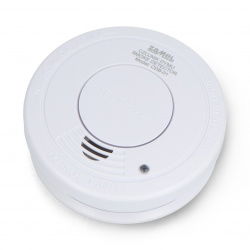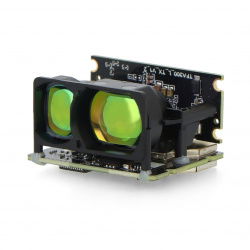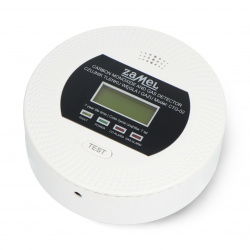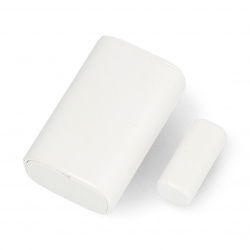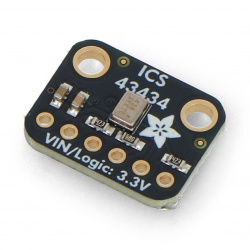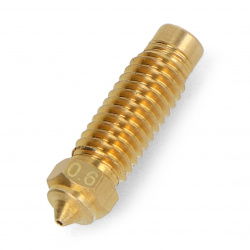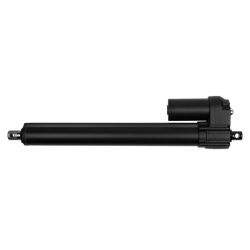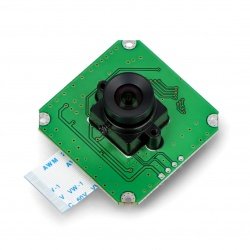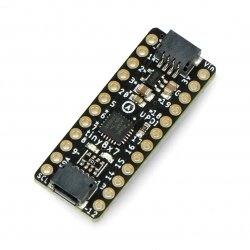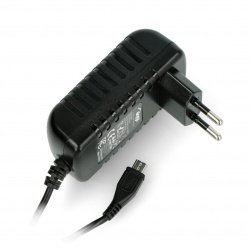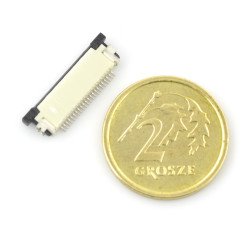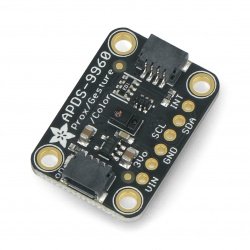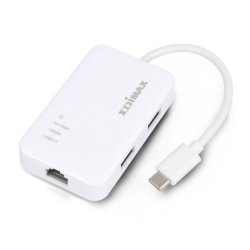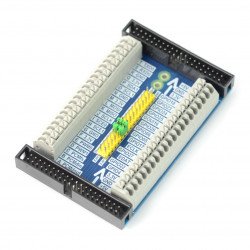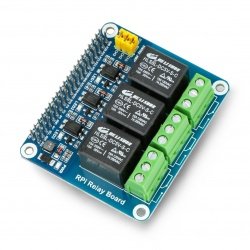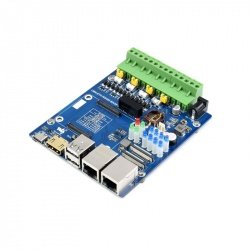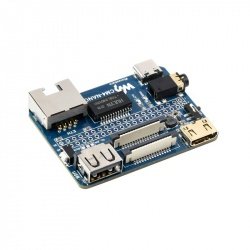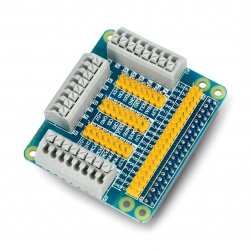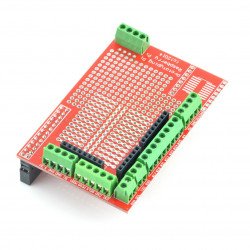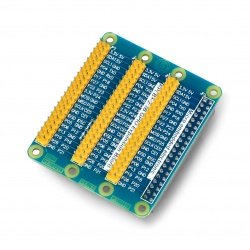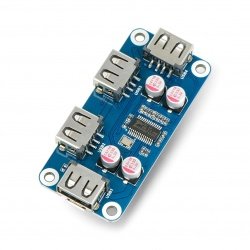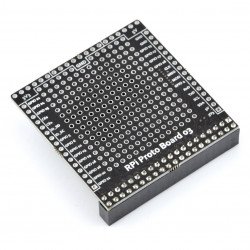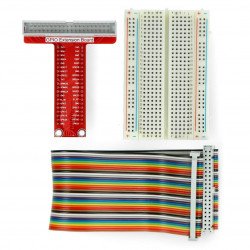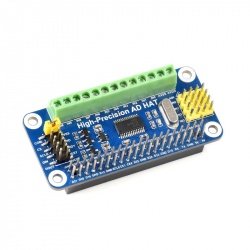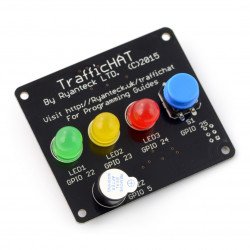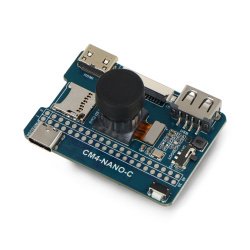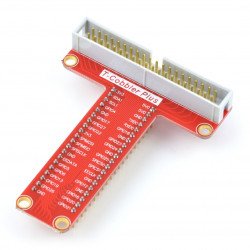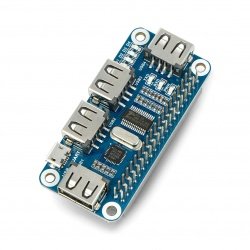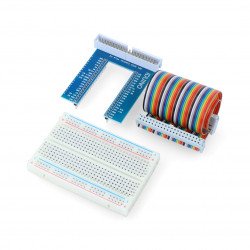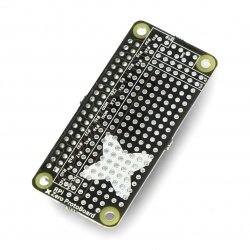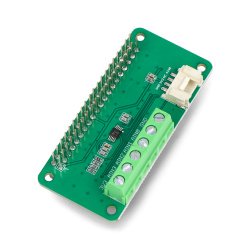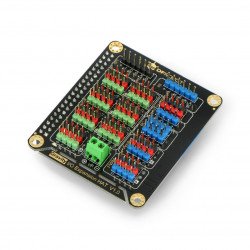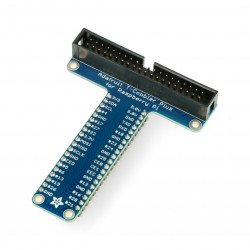Microcomputers of Raspberry Pi attract more and more fans with every month. This is not only due to the latest models, characterized by exceptionally good parameters, including high computing power. Moreover, they offer great possibilities for use by both robotics and programming specialists, as well as people who need the hardware for normal daily use as an alternative to a classic tablet. The Raspberry Pi works well in many conditions, especially since it can be combined with various peripheral devices, which will create a hardware customized to our individual needs, as well as one that matches our project perfectly. Raspberry has a huge potential, but it remains underused to the maximum extent, which only reinforces the desire to discover its new possibilities not only by experienced programmers. The Raspberry Pi features a 40-pin GPIO connector that allows us to connect external devices. When you need an additional interface for your SoC processor to connect to the outside world, not necessarily favourable one, you can use the output expanders. You'll find them in our offer!
Raspberry Pi Hat - extenders findings
GPIO pin header expander for Raspberry Pi 3/2 / B + with quick couplers - cascade
An expansion board that allows you to easily connect the modules to the GPIO pins on a Raspberry Pi. Board is combined with minicomputer via 40-strip ribbon . It has goldpin...RPi Relay Board - 3 relays - cap for Raspberry Pi - Waveshare 11638
Cap fitted to connectors of Raspberry Pi GPIO in version 4B, 3B+, 3B, 2B, B+ and A+, with three relays with parameters of 250 V / 10 A. Board has a screw connector....Nano Base Board (B) for Raspberry Pi Compute Module 4, Same Size as the CM4
Expander of pins in the form of an overlay for the Raspberry Pi Compute Module 4 Lite / eMMC computing module . It has been equipped with special connectors, thanks to...Expander of GPIO leads for Raspberry PI 4/3/2/B+ with clamps
An expansion board that allows you to easily connect the modules to the GPIO pins on a Raspberry Pi. It has goldpin connectors and clamps with push button.THT 26pin prototype board with screw connectors for Raspberry Pi
Board allows independent creation of electronic circuits. Connected directly to the GPIO pins of the Raspberry Pi minicomputer. It has soldered screw connections and goldpin...Raspberry PI 4/3/B+/2 GPIO Expansion Board E1 - blue
The board provides the connection of the three modules to each of the GPIO pins of the Raspberry Pi. It has 3 rows of goldpin connectors, 40 pieces in each.USB Hub Hat (B) - 4-port hub - overlay for Raspberry Pi 4B/3B+/3B/Zero - Waveshare 20317
A USB hub in the form of an overlay for Raspberry Pi minicomputers, manufactured by Waveshare. The device is able to expand the number of ports on Raspberry Pi by 4 more in...THT prototype board - Raspberry Pi 4B/3B+/3B/2B
The board allows you to create electronic circuits yourself. It is connected directly to the GPIO outputs of the Raspberry Pi mini-computer version 4B/3B+/3B/2B.Extension GPIO Raspberry 4B/3B+/3B/2B/B+ to the contact plate + tape + breadboard
This module allows to connect GPIO pins of Raspberry Pi 4B, 3B+, 3B, 2B and B+ versions to the PCB using 40 wires tape. The kit includes GPIO extension module, contact board...ADC ADS1263 converter 32-bit - 10-channel - overlay for Raspberry Pi - Waveshare 18983
High precision ADC in form of Raspberry Pi minicomputer frontend, also compatible with Nvidia's Jetson Nano platform. A powerful ADS1263 chip is responsible for the operation...Traffic HAT - LED module with for Raspberry Pi
Shield for Raspberry Pi, along with three large LEDs, push button and buzzer for self-assembly. It can be programmed in any language for the Raspberry Pi.- Sale
- SPECIAL OFFERS
Extension GPIO Raspberry Pi 3/2/B+ to the contact plate + tape
The module allows connection of the GPIO leads of the minicomputer Raspberry Pi 3, 2 and B + to popular breadboards with 830 and 400 holes, using an attached to the set,...Hub USB Hat - 4-port hub for Raspberry Pi 4B/3B+/3B/Zero - Waveshare 12694
Hat for the Raspberry Pi that adds 4 USB ports and a converter USB-UART. The device has dimensions of 65 x 30 mm, it works with Raspberry Pi 4B/3B+/3B and Zero and Zero W.ePaper Breakout Board - ePaper display driver for Seeed Xiao - Seeedstudio 105990172
ePaper Breakout Board is an extension designed for the Seeed Xiao series , enabling seamless control of ePaper displays . It has a 24-pin FPC connector and an additional...Expansion Kit - extension Raspberry Pi to breadboard + tape + breadboard - Iduino RA028
A module that allows the GPIO Raspberry Pi pins to be led out onto the contact plate using IDC tape. The kit also includes a contact plate and 40-pin tape.Proto Board for Raspberry Pi Zero
Board allows independent creation of electronic circuits. Connected directly to the GPIO pins of the Raspberry Pi minicomputer in a version Zero.Grove ADS1115 - 4-channel 16-bit ADC for Raspberry Pi - Seeedstudio 103030279
Grove 4-channel 16-bit ADS1115 ADC is an analog-digital converter (ADC) in the form of shield for GPIO connectors of Raspberry Pi. It is 4-channel ADC based on the ADS1115...Module ProtoPi Plus - extension for Raspberry Pi 4/3/2/B + to breadboard + ribbon wire
The module provides easy connection of all GPIO leads of the Raspberry minicomputer, version 4, 3, 2 and B+ with any breadboard, no soldering needed.Grove - Base Hat for Raspberry Pi - shield for Raspberry Pi 4B/3B+/3B
Overlay for Raspberry Pi 4B / 3B+ / 3B based STM32 microcontroller with 12-bit ADC, with Grove connectors, allows the connection of sensors and modules from the Grove...IO Expansion HAT for Raspberry Pi 4B/3B+/3B/2B - DFRobot DFR0566
Overlay for Raspberry Pi mini-computer in 4B / 3B+ / 3B / 2B version, where individual sections of Raspberry Pi outputs have been separated , such as: digital, analog, PWM,...See also
Extended I/O system in Raspberry Pi
To connect the Raspberry Pi to the external electronics, we use transition boards, in the form of a PCB, equipped with additional tracks and goldpins, responsible for connecting their own elements above the device board. One track is assigned to one connector pin. Sometimes, however, the board is already equipped with AWG tape, which on the other hand has female IDC40 plugs. It is thanks to this tape that we can connect Raspberry Pi to our own board, which does not necessarily need to be located directly above the computer, but nearby. This is what distinguishes AWG tapes from most Raspberry Pi HAT overlays. It happens, however, that the number of GPIO lines in the Raspberry Pi connector is too small for us, which means that we can't connect as many peripheral devices as we planned and need to do in order to complete the project or create a device that will be compatible with our plans and needs. In such cases we use output expanders. What is their purpose?
Output expanders are dedicated for integrated circuits that use a serial interface such as SPI and I2C to expand the input/output network. This way we gain additional lines, which were previously missing from the original connector. This is how Waveshare Serial Expansion HAT works, for instance. This is one of the overlays for the Raspberry Pi microcomputer, which contains SC16IS752 chip. Using the Waveshare Serial Expansion HAT overlay, we are definitely extending the capabilities of our computer. This way we gain two additional UART interfaces, as well as eight GPIO lines. These are configured via the I2C bus. The output expanders are used very often when planning a large project and a very complex device. They allow the Raspberry Pi to be used with virtually no limitations. The extensive layout of the outputs creates unlimited possibilities for the most ambitious projects.
What will make your Raspberry even more powerful?
If you are not fully satisfied with the current state of your Raspberry, have a look at our store and see how you can further enhance its capabilities. You'll find everything you need to enable it to do even more for you. We offer both simple GPIO lines as well as expanders with many useful features. These allow you to use an additional 16-bit analog-to-digital converter as well as four additional USB ports. You also get the chance to use a set of relays to control high loads at higher voltages. Check what we have prepared for you and your Raspberry. Discover that there is even more to it than before. Create a new project, even more advanced and challenging!






























































































































































































































































































































